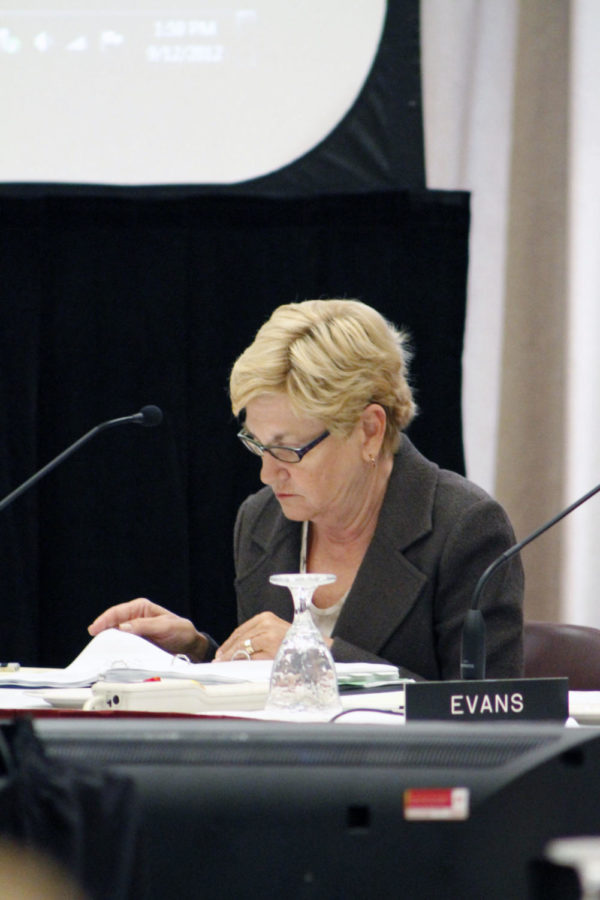Regents suggest $39.5 million savings for Iowa’s students
September 13, 2012
The Iowa Board of Regents announced Wednesday, Sept. 12, a recommendation to replace $39.5 million from the controversial tuition set-aside program with a state funded program.
This replacement will take five years for completion.
Board member Diane Gonzales said Iowa is the only state in the nation that does not already have a state-funded program for need-based funding at public universities, which was the original rationale for creating the program.
The plan will keep the same amount of aid for the students who need it, but instead of having Iowa’s students subsidize the program, the cost would shift to the state and possibly the university foundations.
The board also suggested freezing tuition rates for in-state undergraduates. Board President Craig Lang said: “I would like the university presidents’ model tuition rates for undergraduate resident students to remain unchanged from the current year.”
Lang said the universities’ commitment to sacrifice millions of dollars in new revenue on top of enduring several years of decreased state funding shows a “sincere commitment to students.” Furthermore, he said the universities have made very difficult decisions throughout the past few years and have shown themselves to be creative and strategic in the use of their resources.
According to the board’s report on tuition set-aside, there were more than 26,000 students in Iowa who were in need of financial aid in 2012. Unfortunately, only 14,310 of those students were able to receive institutional aid. In total, the students received $37.1 million, which represents only 14 percent of the total need.
The report shows that in the first year of the five-year program, the board would request the $39.5 million in appropriations from the state to create the fund. The board would also work closely with the three university foundations to increase fundraising for student financial aid.
The second year of the plan would see Iowa undergraduate in-state tuition rates go down by the same amount the state provided, effective as soon as fiscal year 2015. For ISU students paying in-state rates, this decrease could end up being as much as $1,000 per year.
Lang said the universities need to be creative in how they go about bringing costs down for their students.
“I think it’s important that Iowa and Iowans keep a door open,” Lang said in regards to affordability for higher education in Iowa.
The board only received the report on Wednesday and will make a final decision in October. By that time, Lang said he hopes to see clarification on “how the [money] will get allocated to the universities,” noting that some private colleges and universities do have a system in place that could be emulated.
President Pro Tem Bruce Rastetter said the idea of state support was “a critical one” and that continuing to support in-state students is a high priority for the board. Rastetter elaborated on the idea of the university foundations increasing revenue for merit support as well, saying that if the board is to ask the state for money, the universities need to show they are “doing their part” as well.
The tuition set-aside program, which has recently come under scrutiny from critics, takes roughly 22 percent of ISU students’ tuition to pay for scholarships and aid for other ISU students based on merit and financial need. The program is used at all three of Iowa’s major public universities, though the percentage set aside varies among the schools.
The program has come under fire during the financial crisis as a target for cuts to save students money who are paying full tuition. Critics say that as college becomes increasingly expensive for students who are already forced to take out loans to complete a degree, taking almost a quarter of that money and putting it toward other students does not make sense.
Supporters of the program claim removing the program altogether would narrow the access certain students may have to college, decreasing those potential students’ competitiveness in the job market.
Also at the meeting Wednesday, Lang announced the regents will recommend the state bring in an outside consultant to look for ways to increase efficiencies among the universities overall costs and for “options to … facilitate long term growth.”
“We are happy with the progress our universities have made,” Lang said. “But taking these efforts to the next level, we believe, requires the expertise of an outside consultant whose specific focus will be to study the public universities as separate entities.”
Lang requested the proposal be prepared as soon as possible but said: “This effort will take considerable time and significant resources. But we also know that the innovation and collaboration that will occur will validate the investment.”
Other board activities that will affect ISU students included a request from the university for permission to hire a construction firm to install fire sprinklers in and perform several other improvements to Wilson Hall, which will help ease housing concerns with increased student enrollment.







